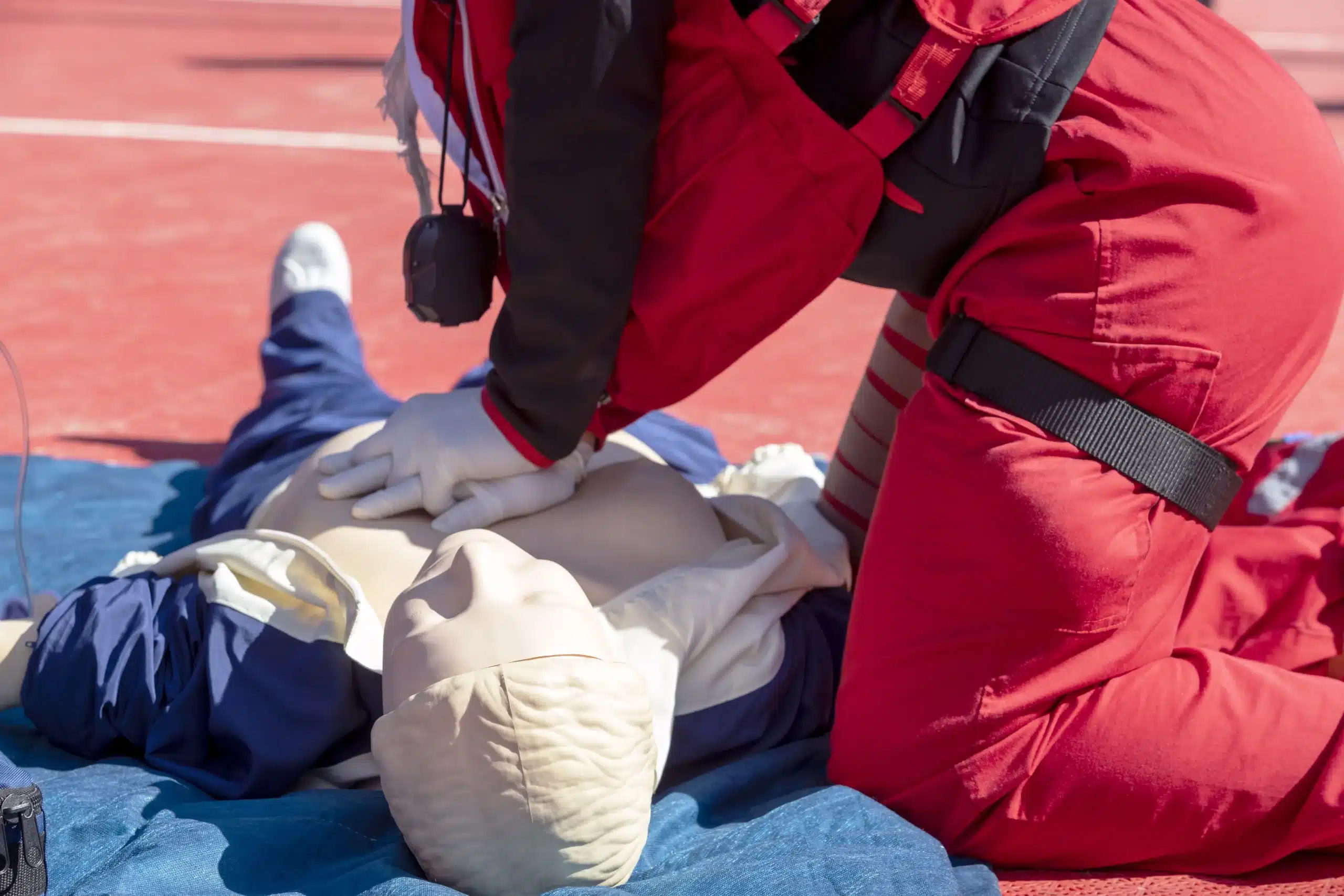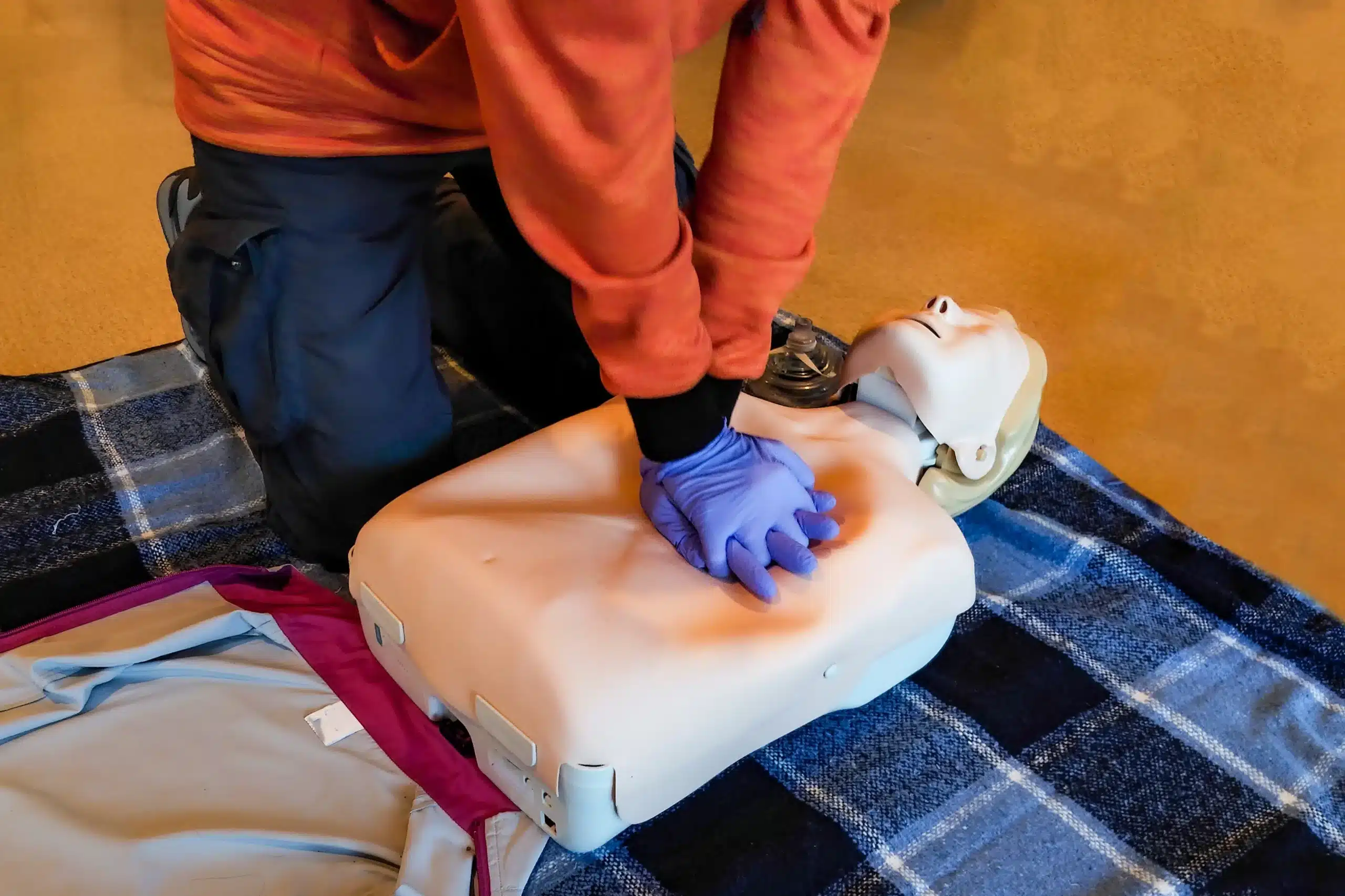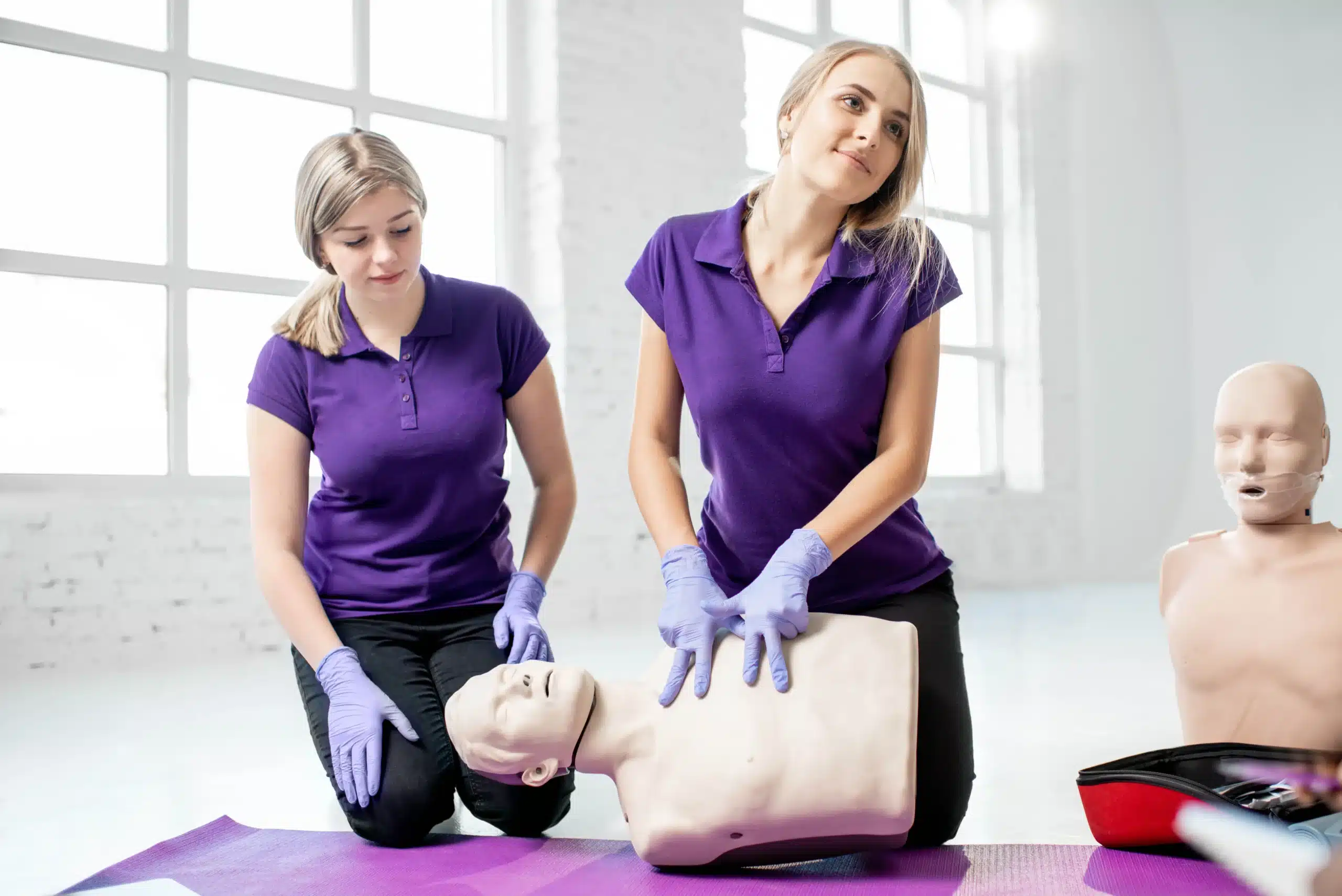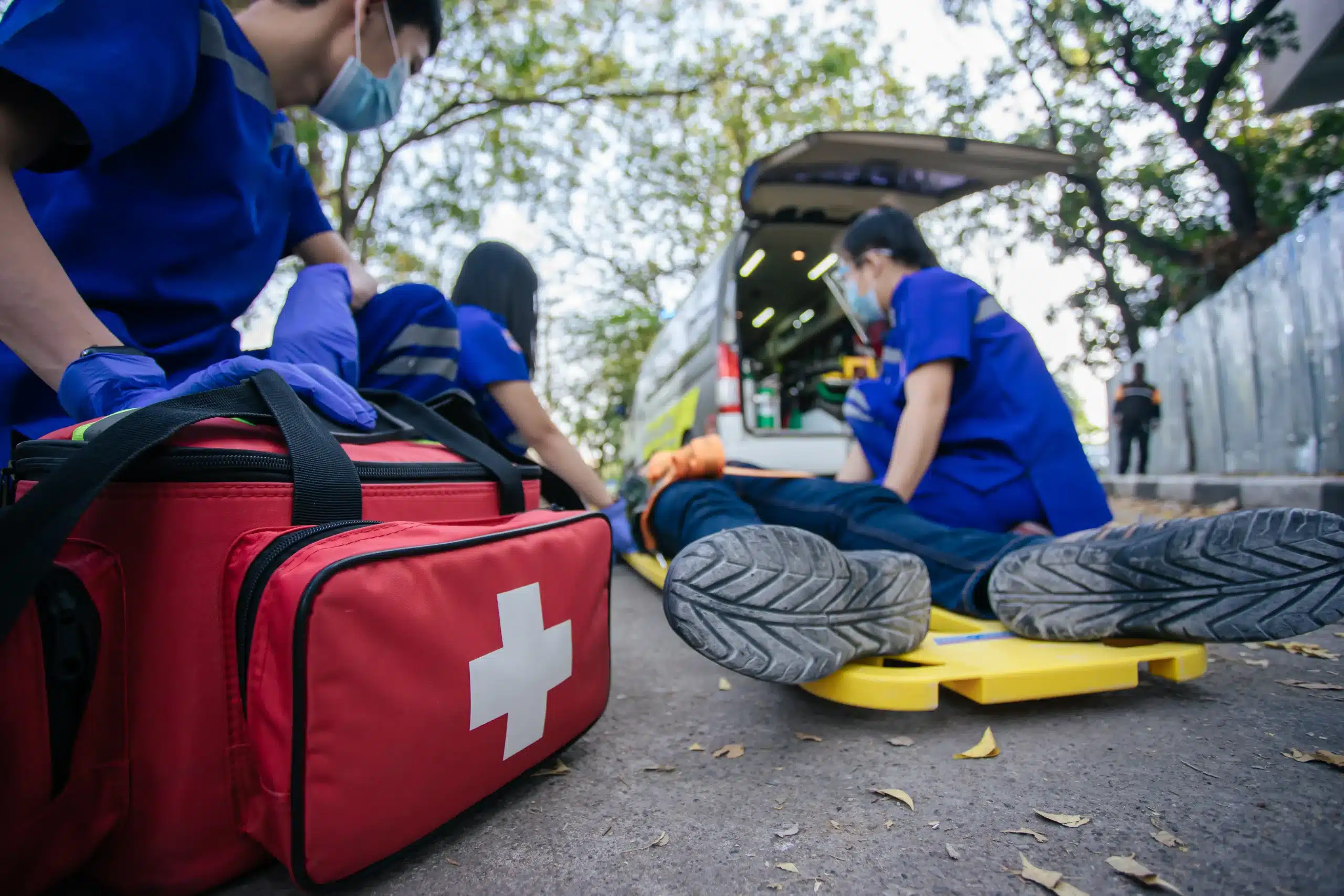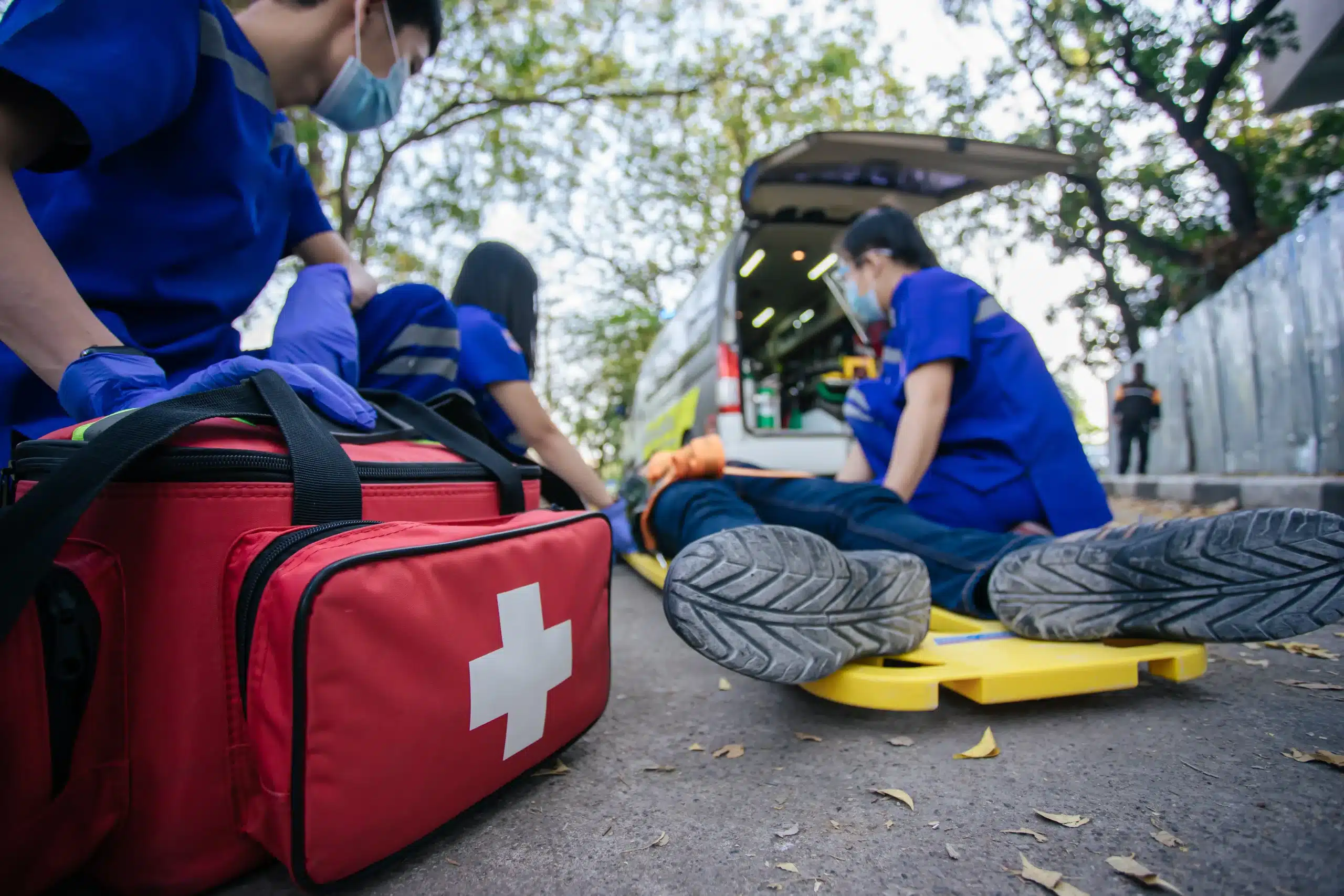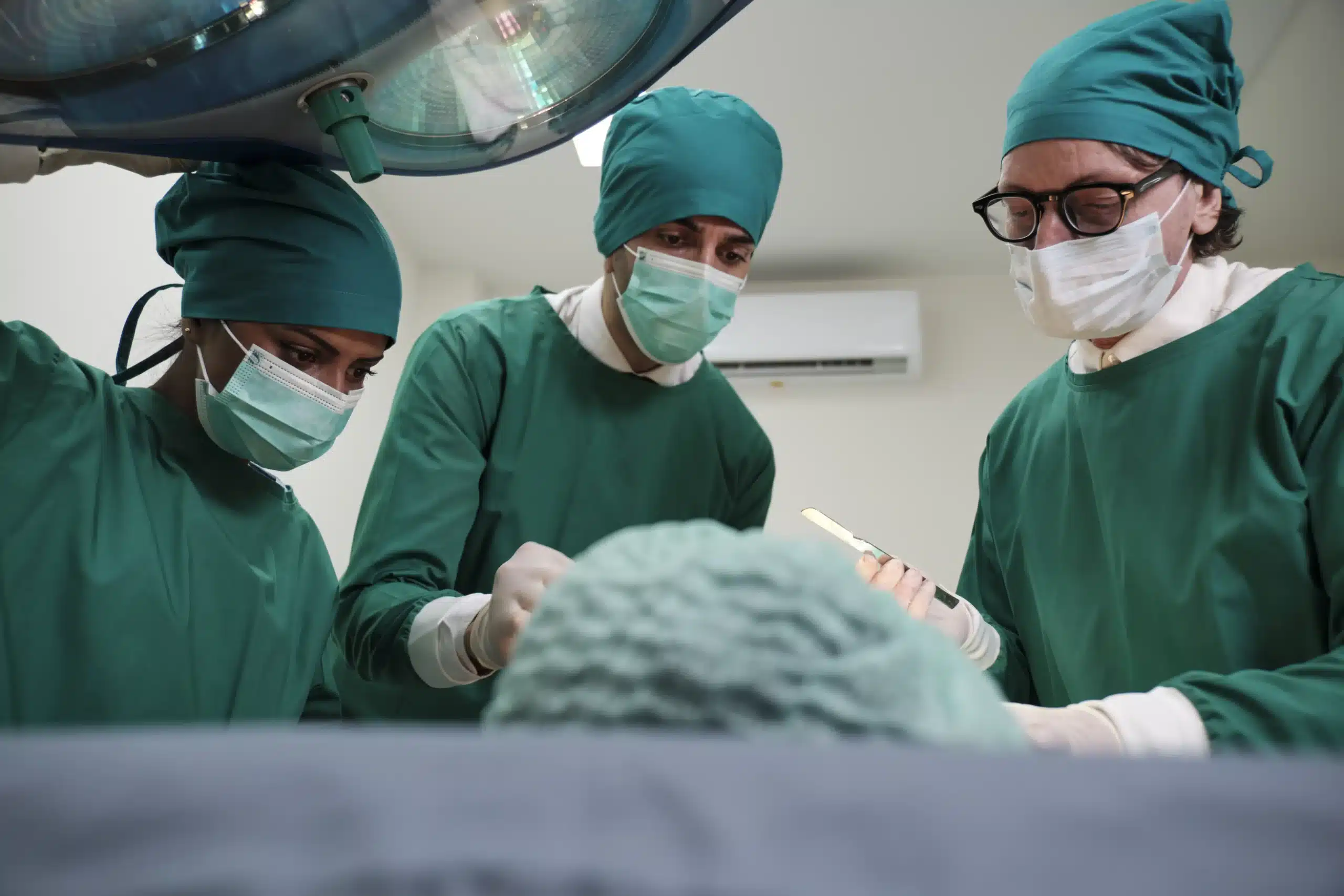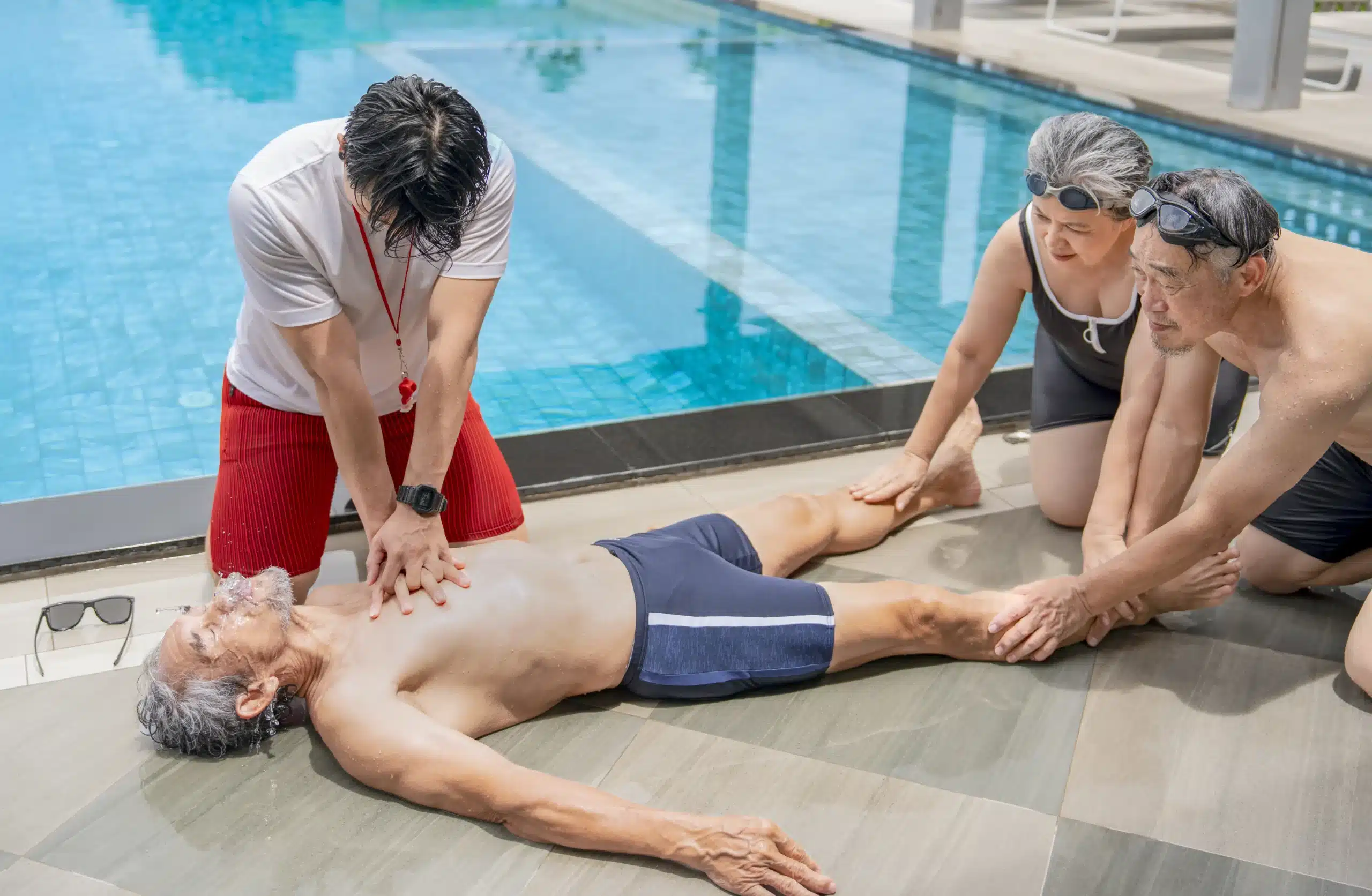CPR is more than just a skill; it’s a gift—the gift of potentially saving a life. If you’re in San Jose and looking to learn CPR, this guide is for you. We’ll explore the different types of CPR classes available in San Jose, discuss the factors that affect class costs, and guide you through the certification process. We’ll also cover what you can expect during a CPR class, address common misconceptions about CPR training, and offer tips for maximizing your learning experience. Whether you’re a medical professional, a parent, or simply someone who wants to be prepared for emergencies, this guide will help you find the perfect CPR class in San Jose to meet your needs and empower you to make a difference.
Key Takeaways
- CPR training empowers you to save lives: Whether you’re a parent, healthcare professional, or community member, learning CPR equips you to respond effectively during cardiac emergencies. Find a course that fits your specific needs.
- CPR classes vary in cost and content: From basic life support to advanced cardiac life support, compare course offerings, schedules, and pricing to find the best fit for your budget and learning goals.
- Maintain your CPR skills through practice and staying informed: Regularly practicing CPR techniques and staying updated on the latest guidelines ensures you’re always prepared to provide effective assistance.
What is CPR and Why is it Important?
Cardiopulmonary resuscitation (CPR) is a life-saving technique used during cardiac arrest. It combines chest compressions and, sometimes, rescue breaths. These actions circulate oxygenated blood to the brain and other vital organs when the heart has stopped effectively pumping. The goal of CPR is to maintain vital organ function until professional medical help arrives and can provide more advanced care. You can learn these techniques in a CPR certification class.
Learning CPR is crucial because it empowers you to respond effectively during cardiac emergencies. Studies show that immediate bystander CPR can dramatically increase the chances of survival after cardiac arrest, sometimes doubling or even tripling the survival rate. Every minute without CPR significantly decreases the likelihood of survival, making immediate action essential. The American Heart Association (AHA) stresses the importance of immediate CPR in improving survival rates. Understanding CPR and its importance can give you the confidence to act quickly and effectively in such critical situations, overcoming any hesitation caused by common misconceptions about its effectiveness.
CPR Class Types in San Jose
CPR classes in San Jose cater to various needs and experience levels. Whether you’re a parent, a healthcare professional, or simply someone wanting to learn this life-saving skill, you’ll find a course that fits. Here’s a breakdown of the common CPR class types available:
Adult CPR
Adult CPR classes equip you with the skills to respond to cardiac arrest in adults. You’ll learn how to recognize the signs of a heart attack, perform chest compressions, and provide rescue breaths. These classes often incorporate automated external defibrillator (AED) training, teaching you how to use this device to help restore a normal heart rhythm. Many organizations, like the American Red Cross, offer adult CPR and First Aid classes in San Jose that meet OSHA requirements, making them suitable for workplace certification. If you’re looking for a comprehensive option, consider a combined CPR/AED/First Aid certification through a provider like Santa Clara CPR Classes.
Pediatric CPR
Pediatric CPR classes focus on providing CPR to infants and children. You’ll learn modified techniques tailored to their smaller bodies and unique physiology. These classes cover choking relief as well, empowering you to respond effectively in various pediatric emergencies. Pediatric CPR training is invaluable for parents, caregivers, teachers, and anyone who regularly interacts with children. Many providers, including Santa Clara CPR Classes, bundle Pediatric CPR with other essential certifications like PALS.
Professional CPR for Healthcare Providers
Professional CPR classes, such as BLS and ACLS, are designed for healthcare professionals, including doctors, nurses, paramedics, and other healthcare providers. These courses delve deeper into advanced life support techniques, covering topics like airway management, ECG interpretation, and team dynamics during resuscitation. Providers like the Emergency and Health Training Center and Santa Clara CPR Classes offer these advanced, AHA-certified courses in San Jose and surrounding areas. These certifications are typically required for employment in most healthcare settings. You can find more information on professional-level CPR courses on the Santa Clara CPR Classes website.
CPR Class Costs in San Jose
CPR certification classes in San Jose come at different price points, depending on a few key factors. Understanding these factors helps you find a course that fits your budget and learning goals. Let’s explore the typical costs and what influences them.
Average Class Costs
CPR certification in San Jose typically costs between $50 and $100. Basic adult CPR classes often fall on the lower end of this range. More comprehensive courses, like those including pediatric CPR, first aid, or certifications for healthcare providers (like BLS or ACLS), usually cost more. Remember that these are averages, and prices may vary. Compare prices from different providers before choosing a class. Check our Low Price Guarantee to ensure you’re getting the best value.
Factors Affecting Price
Several factors influence CPR class costs. The class format is a major one. Online CPR classes are generally less expensive than in-person classes. However, online courses may not satisfy all workplace requirements. Hybrid classes, combining online learning with in-person skills assessments, offer a practical compromise. The type of certification you need also matters. For example, a basic adult CPR class will likely cost less than a combined CPR/AED/First Aid course. Finally, the training provider itself influences pricing. Some organizations, like Santa Clara CPR Classes, offer competitive rates and discounts. Contact us to discuss your CPR class options.
Discounts and Group Rates
If you need to certify a group, like a workplace team or community organization, ask about group discounts. Many CPR training providers offer lower rates for group bookings. This can be a budget-friendly way to train everyone. Some providers even offer on-site training for larger groups, eliminating travel time and potentially reducing the overall cost. This is especially helpful for businesses in San Jose and nearby areas like Milpitas and Santa Clara.
CPR Certification Process in San Jose
Getting your CPR certification is straightforward. Whether you’re a healthcare professional, a concerned parent, or simply want to be prepared for emergencies, understanding the process, validity period, and options for same-day certification can help you choose the right class. We’ll break down everything you need to know about CPR certification in San Jose.
Get Certified: Steps to Follow
You have two convenient options for CPR certification in San Jose. You can choose the blended learning course from the American Heart Association (AHA), which combines online instruction with in-person skills practice. This lets you learn the basics at your own pace before demonstrating your skills to a certified instructor. Or, you can choose a traditional in-person class, typically lasting about four hours. Both options cover the essential skills and knowledge needed for CPR and AED use. To get started, choose the class format that works for you, register online, and attend your session.
Certification Validity
Your CPR certification, whether through blended learning or an in-person class, is typically valid for two years. This timeframe aligns with AHA guidelines, ensuring rescuers stay up-to-date with the latest techniques and best practices. Keeping your certification current is crucial for providing effective assistance during emergencies.
Same-Day Certification
A perk of taking a CPR class in San Jose is the availability of same-day certification. Many providers, including Santa Clara CPR Classes, offer courses that allow you to receive your certification card immediately after completing the class. This is especially helpful if you need certification quickly for job requirements or other time-sensitive situations. Check with your chosen provider to confirm their same-day certification options.
What Happens During a CPR Class?
CPR classes blend classroom learning with hands-on practice to give you the confidence to respond effectively in medical emergencies. Here’s what you can expect:
Classroom Instruction
The first part of your CPR class builds a strong theoretical foundation. Your instructor will cover CPR fundamentals, emphasizing the importance of early intervention. You’ll learn to recognize cardiac arrest and the steps to take in various emergencies. Expect a detailed review of CPR techniques and guidelines, often based on recommendations from organizations like the American Heart Association. This portion may also cover AED use and first aid for choking.
Hands-on Practice
Practical experience is key to mastering CPR. After the classroom instruction, you’ll practice the techniques on realistic mannequins. This hands-on training helps you develop muscle memory and the confidence to perform CPR in a real emergency. You’ll practice chest compressions, rescue breaths, and AED use. Your instructor will provide guidance and feedback.
Assessment and Certification
After hands-on training, there’s an assessment to evaluate your understanding and skill level. This usually involves demonstrating your CPR technique on a mannequin while the instructor observes. After successful completion, you’ll receive your CPR certification card, often issued the same day. This certification is widely recognized and demonstrates your CPR proficiency. Check with your chosen CPR class provider, like Santa Clara CPR Classes, for details on their specific process. This certification is typically valid for two years, after which you’ll need a refresher course.
Choose the Right CPR Class
Finding the right CPR class boils down to understanding your needs, comparing what different courses offer, and deciding on the best learning environment for you. Let’s break down each of these steps.
Assess Your Needs
First, think about why you’re taking a CPR class. Are you a healthcare professional needing ACLS certification? Do you need CPR training for your job at a daycare or construction site? Or are you a parent wanting to learn essential life-saving skills for your family? Maybe you’re looking to volunteer with a local organization and they require CPR certification. Your reason for taking the class will heavily influence which type of class is best for you. If you’re unsure, contacting a training provider can help clarify which course aligns with your goals.
Compare Course Offerings
Once you know what you need, compare CPR classes. Look at what each course covers. Some focus solely on adult CPR, while others include pediatric CPR, First Aid, or Basic Life Support (BLS) instruction. Check the class schedules and locations. Santa Clara CPR Classes offers a variety of American Heart Association (AHA) certified courses—including BLS, ACLS, PALS, and First Aid—with convenient schedules and a low price guarantee. Compare prices and look for any discounts or group rates. Reading reviews can also give you insights into other students’ experiences.
Online vs. In-Person
Finally, consider whether you prefer online or in-person learning. Both have advantages. Online courses offer flexibility, allowing you to learn at your own pace and on your own schedule. However, CPR certification requires hands-on practice, so even many online courses, like the HeartCode BLS, include an in-person skills session. In-person classes provide immediate feedback from instructors and the opportunity to practice with other students. Many providers offer blended learning—combining online coursework with in-person skills sessions—giving you the best of both worlds. Consider your learning style and schedule when making your decision.
Top CPR Class Providers in San Jose
Finding the right CPR class can feel overwhelming, but several reputable organizations and providers offer training in San Jose. Here’s a quick rundown to help you in your search:
Santa Clara CPR Classes
Santa Clara CPR Classes offers a range of American Heart Association (AHA) certified courses, including BLS, ACLS, PALS, and First Aid. They focus on convenient schedules, often with daily availability, and serve Santa Clara, Milpitas, and San Jose. A commitment to customer service and a low price guarantee makes them a solid option. Learn more about their BLS certification and other courses like ACLS on their website. For those needing recertification, they also offer convenient RQI classes.
American Red Cross
The American Red Cross is a well-known provider of CPR and First Aid training. Their San Jose classes are OSHA compliant, meeting workplace requirements for many professions. You can explore their CPR class offerings in San Jose directly on their website.
American Heart Association
While the American Heart Association sets the standards for CPR training, they don’t directly conduct classes. However, various certified training centers offer AHA-approved courses. For example, CPR Training Center offers AHA CPR, BLS, ACLS, PALS, and First Aid classes in San Jose and the broader Bay Area.
Santa Clara County Fire Department
For those looking for basic CPR and AED training, the Santa Clara County Fire Department (SCCFD) is a valuable resource. They offer both Hands-Only CPR/AED training (non-certification) and the AHA Heartsaver® CPR/AED blended learning course (2-year certification). Visit the SCCFD website for more details on their programs.
Local Hospitals and Community Centers
Many local hospitals and community centers also offer CPR classes. Checking online course directories like Eventbrite, browsing local training providers’ websites, or contacting nearby hospitals and community colleges can help you discover these options. For example, you can find information on CPR Certification in Santa Clara. If you have questions or need assistance finding a class, consider contacting Santa Clara CPR Classes directly.
Prepare for Your CPR Class
Getting ready for your CPR class doesn’t require a ton of prep, but a little planning can make your experience smoother and more effective. Here’s what you should know:
What to Bring
CPR classes are primarily about hands-on learning, so you don’t need much. The most important thing is your willingness to learn and participate. Comfortable clothing is recommended since you’ll be practicing on the floor with mannequins. While note-taking materials aren’t usually required, some students find it helpful to jot down key reminders or questions.
Pre-Course Study Materials
While pre-course study isn’t mandatory for most CPR classes, familiarizing yourself with the latest guidelines can be beneficial. The American Heart Association website offers resources and information on CPR best practices. Keep in mind that guidelines are occasionally updated as new research emerges, so checking for the most recent recommendations is always a good idea.
Tips for Success
CPR training is a valuable skill that can save lives. To get the most out of your class, come prepared to actively participate. Ask questions if anything is unclear and take advantage of the hands-on practice sessions. The more you engage, the more confident you’ll become in your abilities. Don’t hesitate to ask your instructor for feedback—they’re there to help you succeed. And remember, Santa Clara CPR Classes is committed to providing excellent customer service, so feel free to reach out with any questions before, during, or after your class. We offer a low price guarantee and convenient class schedules with daily availability in Santa Clara, San Jose, and Milpitas.
CPR Training Myths
It’s easy to get confused about CPR, especially with so much information (and misinformation) floating around. Let’s clear up some common misconceptions about CPR training and understand the realities of this life-saving technique.
Debunking Myths
One persistent myth is that chest compressions alone are enough to revive someone. While chest compressions are crucial for maintaining blood circulation, rescue breaths are also an important part of CPR, especially for children and infants. Another misconception is that CPR will always revive someone. Sadly, this isn’t true. However, CPR significantly increases the chances of survival until professional medical help arrives. It buys time and can make all the difference. Finally, some people believe only medical professionals can perform CPR. This is absolutely false. Anyone can and should learn CPR—it’s a skill that empowers you to help in a crisis. In fact, bystanders are encouraged to act in emergencies. Learn more about our CPR classes.
Understanding CPR Realities
The reality is that effective CPR can double or triple a person’s chance of survival. Bystander CPR is truly a game-changer. It’s important to remember that CPR is performed when someone’s heart has stopped beating effectively. Continuous CPR is ideal, but don’t worry if you need to pause briefly to call 911 or to locate and use an AED. Many people hesitate to learn CPR because they’re afraid of doing it wrong, potentially injuring the person, or performing mouth-to-mouth. These are valid concerns, but CPR training addresses them directly. High-quality CPR classes teach you the correct techniques and build your confidence so you can act quickly and effectively in a real emergency. Contact us at Santa Clara CPR Classes to learn more.
Maximize Your CPR Training
Getting your CPR certification is a fantastic achievement, but your learning journey shouldn’t end there. To truly maximize your training and be prepared for real-life emergencies, consistent practice and staying up-to-date are key.
Practice After Certification
Think of CPR skills like any other skill—the more you practice, the more confident and proficient you become. Regularly reviewing and practicing the techniques you learned in your CPR class will help solidify your muscle memory and ensure you can act quickly and effectively under pressure. This ongoing practice will not only maintain your skills but also boost your confidence in using them when it matters most. Consider setting up practice sessions with friends or family, or even using online resources to guide your practice. Preparing for your CPR training is crucial to maximizing the advantages of the course and acquiring life-saving skills.
Stay Updated on CPR Guidelines
The medical field is constantly evolving, and CPR guidelines are no exception. Staying informed about the latest recommendations from organizations like the American Heart Association is essential for providing the most effective care. These updates often incorporate new research and best practices to improve outcomes in emergency situations. Make it a habit to periodically check for updates to the guidelines and consider refresher courses like our RQI classes to stay current with any changes. This proactive approach will ensure your CPR knowledge remains accurate and aligned with current standards. Plus, familiarizing yourself with common CPR myths will empower you to act confidently in emergencies.
Related Articles
- Why CPR is Important in Healthcare – Santa Clara CPR Classes
- CPR Certification in San Jose: A Complete Guide
- CPR Certification Near Me: Your Complete Guide – Santa Clara CPR Classes
- Debunking Common CPR Myths
- Find CPR Courses Near Me: Your Local Guide – Santa Clara CPR Classes
Frequently Asked Questions
How long is CPR certification valid? CPR certification is typically valid for two years. It’s important to renew your certification before it expires to stay up-to-date on the latest techniques and maintain your skills.
What’s the difference between adult and pediatric CPR? Adult CPR techniques are designed for adults and adolescents, while pediatric CPR is specifically adapted for infants and children. The key differences lie in the force and depth of chest compressions, as well as the method for providing rescue breaths.
Do I need to take an in-person class, or can I get certified online? While online CPR courses offer flexibility for learning the cognitive aspects, CPR certification requires demonstrating your skills in person. Many providers offer blended learning, combining online coursework with an in-person skills assessment.
How much does a CPR class cost in San Jose? The cost of a CPR class in San Jose varies depending on the provider, the type of certification (adult, pediatric, BLS, etc.), and the course format (online, in-person, blended). Expect to pay anywhere from $50 to $100 on average.
What if I’m nervous about performing CPR in a real emergency? It’s completely normal to feel apprehensive about using CPR in a real-life situation. High-quality CPR classes emphasize hands-on practice and provide guidance to build your confidence and prepare you to respond effectively under pressure.
